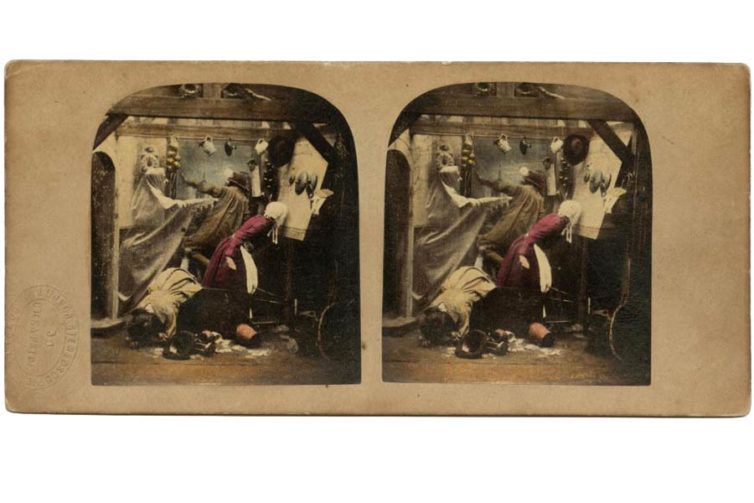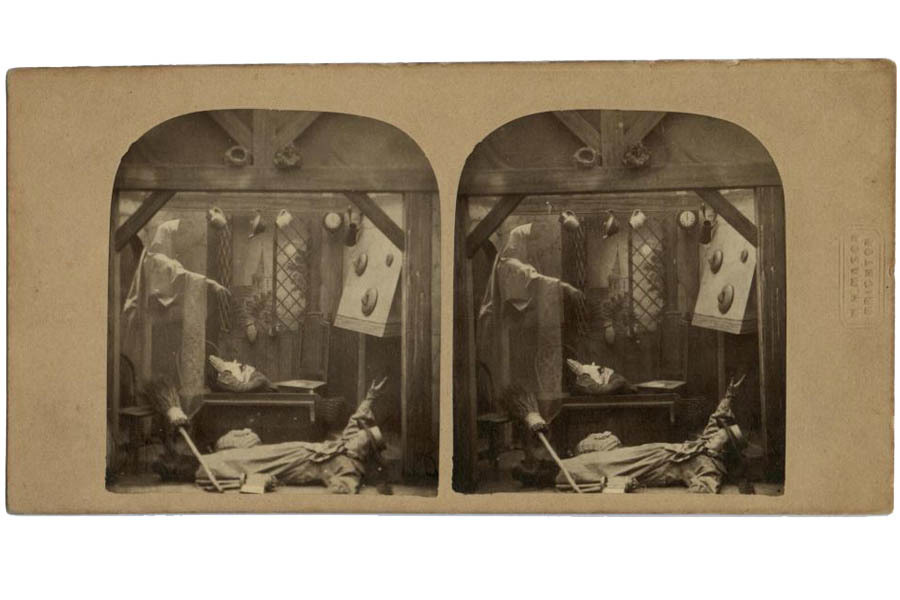Home / Creative Arts & Media / Stereoscopy: An Introduction to Victorian Stereo Photography / Ghosts in the Machine
This article is from the free online
Stereoscopy: An Introduction to Victorian Stereo Photography


Reach your personal and professional goals
Unlock access to hundreds of expert online courses and degrees from top universities and educators to gain accredited qualifications and professional CV-building certificates.
Join over 18 million learners to launch, switch or build upon your career, all at your own pace, across a wide range of topic areas.


 Cabinet portrait depicting Mr Richard Mansfield as Dr Jekyl [sic] and Mr Hyde, by Henry Van Der Weyde, London, c. 1888 IL.2003.44.5.25. © Howarth-Loomes Collection at National Museums Scotland
Cabinet portrait depicting Mr Richard Mansfield as Dr Jekyl [sic] and Mr Hyde, by Henry Van Der Weyde, London, c. 1888 IL.2003.44.5.25. © Howarth-Loomes Collection at National Museums Scotland
 Carte-de-visite depicting Mr Charles Dickens, famous author who created some of the world’s best-known fictional charatcers, by Mason and Company, Norwich IL.2003.44.4.40 © Howarth-Loomes Collection at National Museums Scotland
Carte-de-visite depicting Mr Charles Dickens, famous author who created some of the world’s best-known fictional charatcers, by Mason and Company, Norwich IL.2003.44.4.40 © Howarth-Loomes Collection at National Museums Scotland
 Stereocard entitled ‘The Ghost in the Stereoscope’ by an unknown photographer, sold by W. H. Mason, Brighton, 1860s. IL.2003.44.6.7.48 © Howarth-Loomes Collection at National Museums Scotland
Stereocard entitled ‘The Ghost in the Stereoscope’ by an unknown photographer, sold by W. H. Mason, Brighton, 1860s. IL.2003.44.6.7.48 © Howarth-Loomes Collection at National Museums Scotland
 Colour stereocard entitled ‘A Ghost’ depicting a man struck down in fear by a ghostly presence, by Claudius Erskine Goodman, 1857 – 1861. IL.2003.44.6.7.30 © Howarth-Loomes Collection at National Museums Scotland
Colour stereocard entitled ‘A Ghost’ depicting a man struck down in fear by a ghostly presence, by Claudius Erskine Goodman, 1857 – 1861. IL.2003.44.6.7.30 © Howarth-Loomes Collection at National Museums Scotland
 Stereocard depicting a woman on her death bed with an angelic ghost hovering above her and a women and girl at her bedside, by an unknown photographer. IL.2003.44.6.7.27 © Howarth-Loomes Collection at National Museums Scotland
Stereocard depicting a woman on her death bed with an angelic ghost hovering above her and a women and girl at her bedside, by an unknown photographer. IL.2003.44.6.7.27 © Howarth-Loomes Collection at National Museums Scotland





